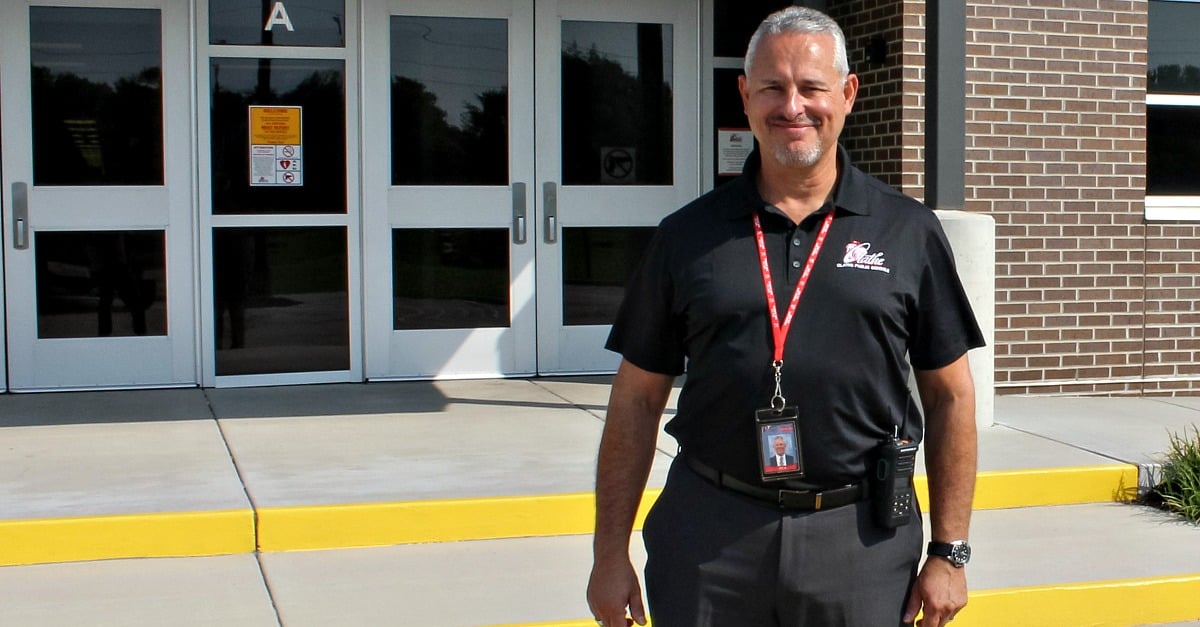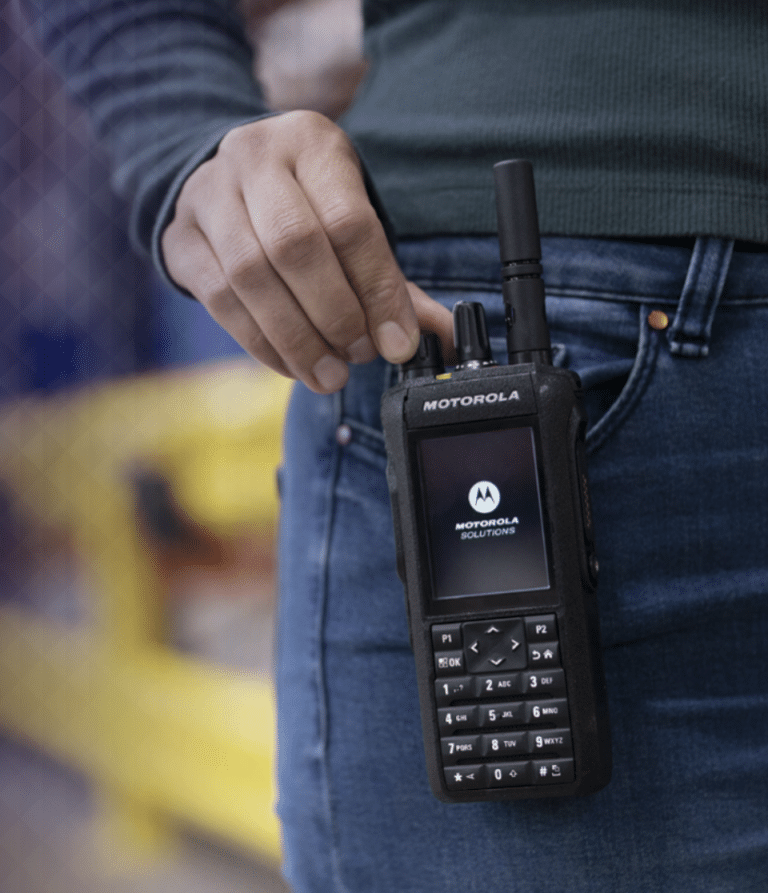30 years of service as an Overland Park police officer gives Rick Castillo, Manager of Safety Services for Olathe Public Schools (USD 233), the experience and perspective he needs to oversee the protection of Greater Kansas City’s largest school district.
“There’s no single solution for ensuring safety and security in a school district,” says Castillo (pictured above). “You have to figure out what people, processes and technology can offer, and get it all working together.”
Looking out for teachers, administrators and over 30,000 students, forces Castillo to choose his priorities and methods wisely. He’s been on the job about four years and has spent most of that time crafting the right approach.
A Foundation of Strong Relationships
When you think of school security, metal detectors or cameras likely come to mind. However, Castillo says the core of his security strategy is relationship building.
“When students, teachers, staff and the broader community share a strong bond, it not only helps detect and control security threats, it actually prevents them. Nothing beats prevention.”
Prevention requires more than creating physical barriers against security threats. Castillo believes a district must forge a cultural defense. That philosophy keeps him busy bringing people together to train, collaborate on solutions, or just talk.
“The number one thing we can do to protect ourselves and our children is work hard to better understand each other and our respective roles in keeping our schools safe.”
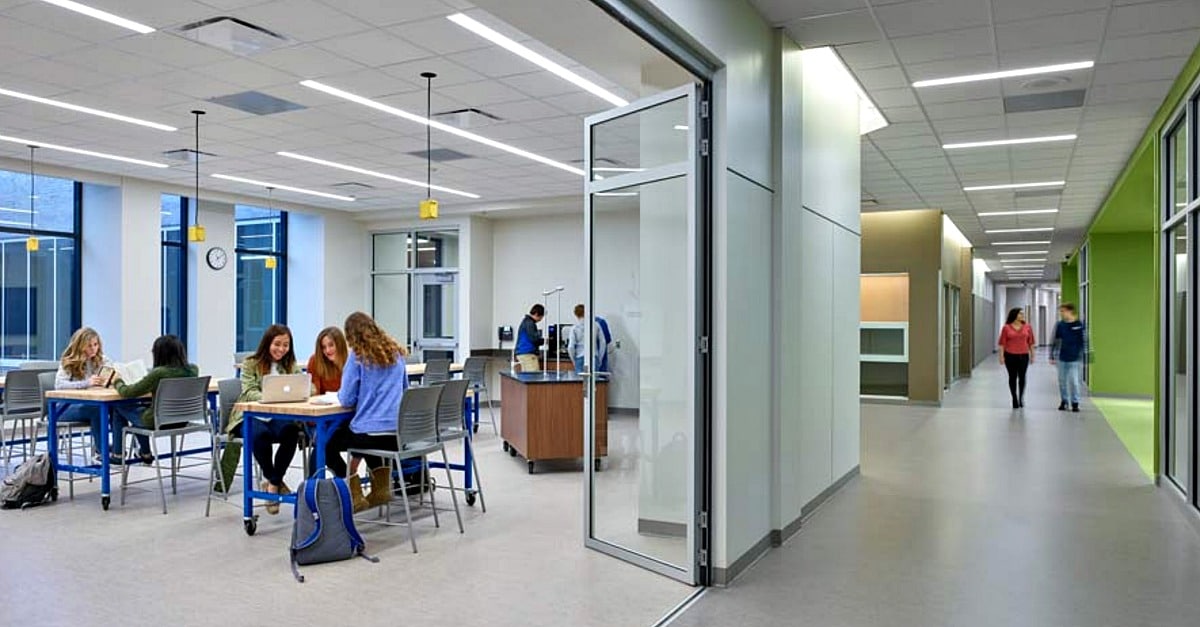
The job of relationship building is also a key responsibility for security teams at Olathe schools. Police officers serving as School Resource Officers monitor high schools, middle schools and elementary schools with the help of supporting staff. They watch for small signs that can turn into something more serious and work to become more than a symbol of enforcement.
“These officers are getting into classrooms and teaching. They’re teaching the dangers of drugs and drunk driving, and other safety and civics topics. But more importantly, I think, is that they have an office in the school building where kids visit and feel free to talk. So to a degree, you could also say they have a mentor or counselor role.”
Security teams don’t go it alone in Olathe Public Schools. The district has invested heavily in a staff of social workers, psychologists and counselors at all levels.
“The district’s support of mental health is huge,” says Castillo. “It’s a vital piece of what we’re trying to do. These professionals are making a difference every day in a way that translates into the absence of security threats.”
Communication Connects Community
Castillo’s work involves a lot of talking, but he’s also an advocate of good listening. He says fluid, two-way communication paves the road to a strong, secure community.
“We’re all from different backgrounds and think differently as professionals. We have to work hard to put ourselves in each other’s shoes to really appreciate our common ground and goals. The more we’re on the same page, the less we have to worry about conflicts that can escalate.”
Castillo is literally getting everyone on the same page with a series of posters designed to raise awareness about a basic, but powerful message.
“We’ve all heard the phrase ‘See something? Say something.’ and let me tell you, it’s important. It drives our whole approach.”
School counselors worked closely with Castillo to develop iconic characters on the posters that connect with kids of various ages and draw them in.
“The message is taking hold,” says Castillo. “I think students are feeling more comfortable with speaking up and understand what it can mean.”
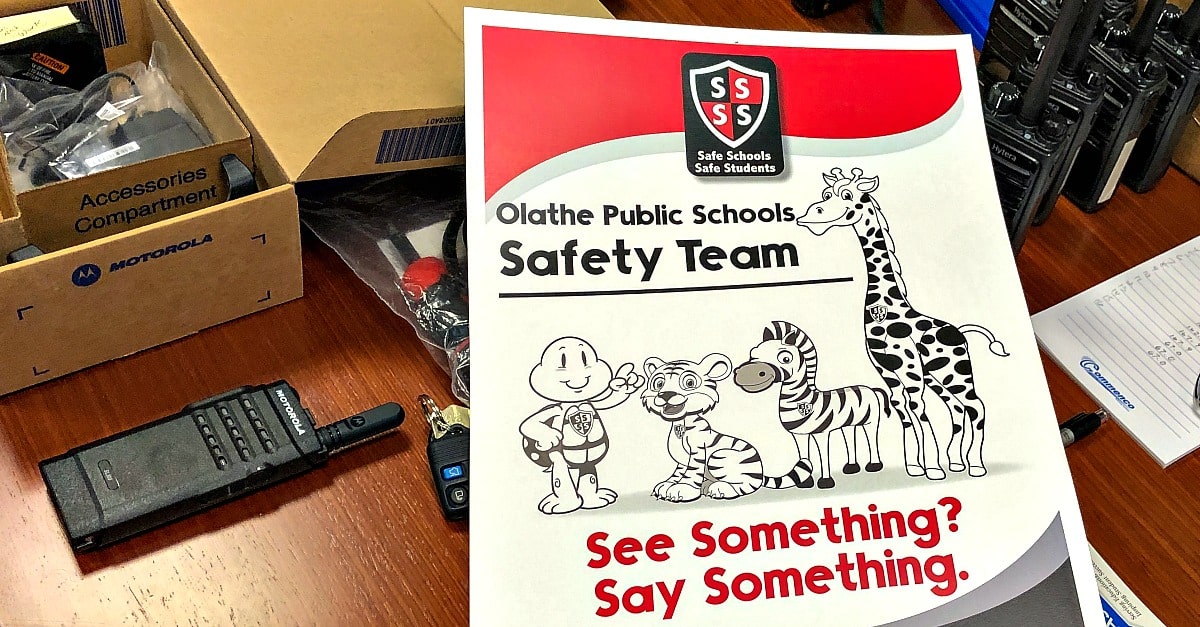
Active-shooter training is as much a part of the routine at Olathe schools as tornado and fire drills. The training helps everyone think through the best responses in the event of a security incident and also gives them a unique opportunity to communicate.
“It’s not only about going through the motions of emergency response,” explains Castillo. “It’s a chance to talk about these kinds of situations before they occur and that helps everyone understand safety and security better.”
Technology’s Supporting Role
When it comes to technology, Castillo always keeps an eye out for anything that can streamline his effort and work effectively in the real world. For example, after hearing feedback from district staff, he turned a security radio upgrade into a bigger opportunity.
“Both the district’s radio system and the public safety radio system are essential for our purposes. However, I know administrators are not going to walk around with two radios, so I worked with Commenco to have both systems connected to a single radio. Now administrators can hear emergency response communications during an incident in addition to district communications. That empowers smarter decision-making during a crisis.”
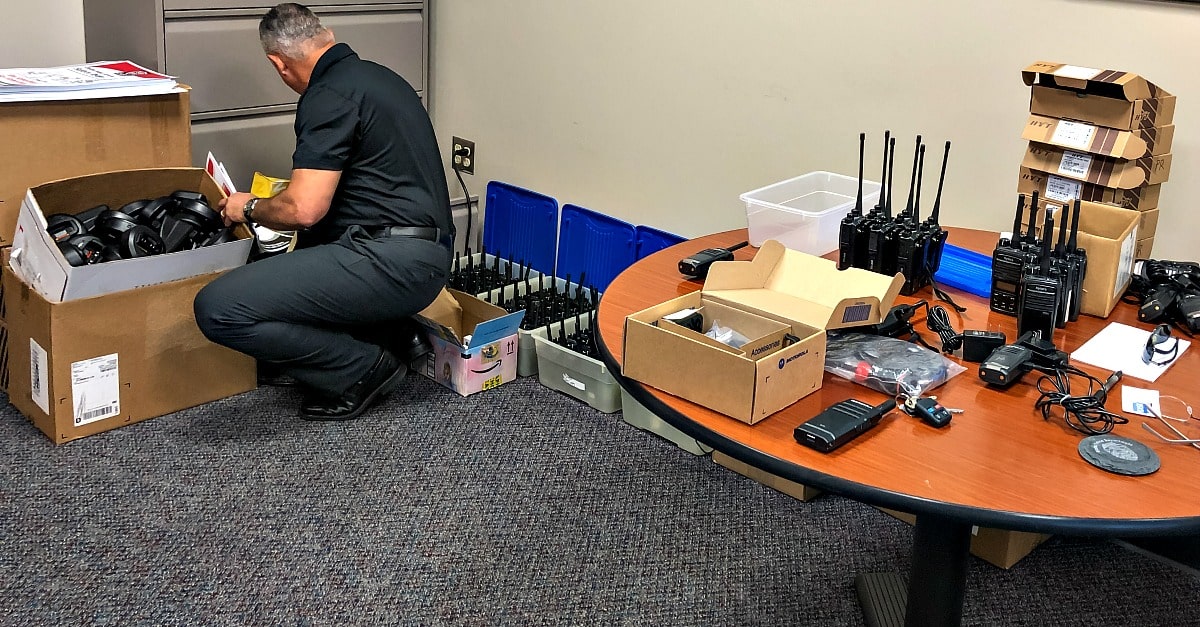
The Olathe School District’s smartphone app also puts technology to work for security in a practical and useful way. Castillo says threats are far more likely to be communicated if anonymity is assured. That’s why the app now lets you speak up anonymously about everything from potential violence to suicide warning signs.
“There’s a hidden benefit to the app that’s really big,” says Castillo. “If a person uses it and chooses to reveal their identity, there’s a process for quickly getting them the support resources they need to work through a problem, whether that’s counseling or something similar.”

Access Control and Surveillance
On top of strong relationships and proactive communications, Castillo’s strategy also depends on advanced security technologies at school buildings. He says choosing the right options can be tricky because you have to balance security with the realities of the environment.
“School should be a place where you feel happy. We don’t want to go so far with security that it feels more like a prison.”
Smart technology helps Castillo strike a balance. He says it gives him an enormous capability to work quietly and efficiently behind the scenes.
“For example, I have full access to most of our buildings pretty much no matter where I happen to be at the time. I can lock and unlock doors across the district from a remote device if necessary. I can also receive alerts when a locked door opens and even get a photo of who opened it.”
Castillo says the Olathe School District will soon implement technology that will instantly draw on cloud-based data to highlight sex offender data and other relevant, public information to help school officials evaluate a situation before unlocking a door.

Cameras are also among Castillo’s most important security tools. They’re used to confirm the identity of staff, monitor school buses, and watch for unusual activity at schools. He says advanced software analytics allow him to work smarter and better.
“I can do things like search for specific imagery that might be part of a security threat. We have the capacity to program cameras to watch for someone who has been banned from school property. And after an incident, I can go back and review video to look for behavior patterns that might help explain the incident. It’s all quite amazing and lets me do so much on my own.”
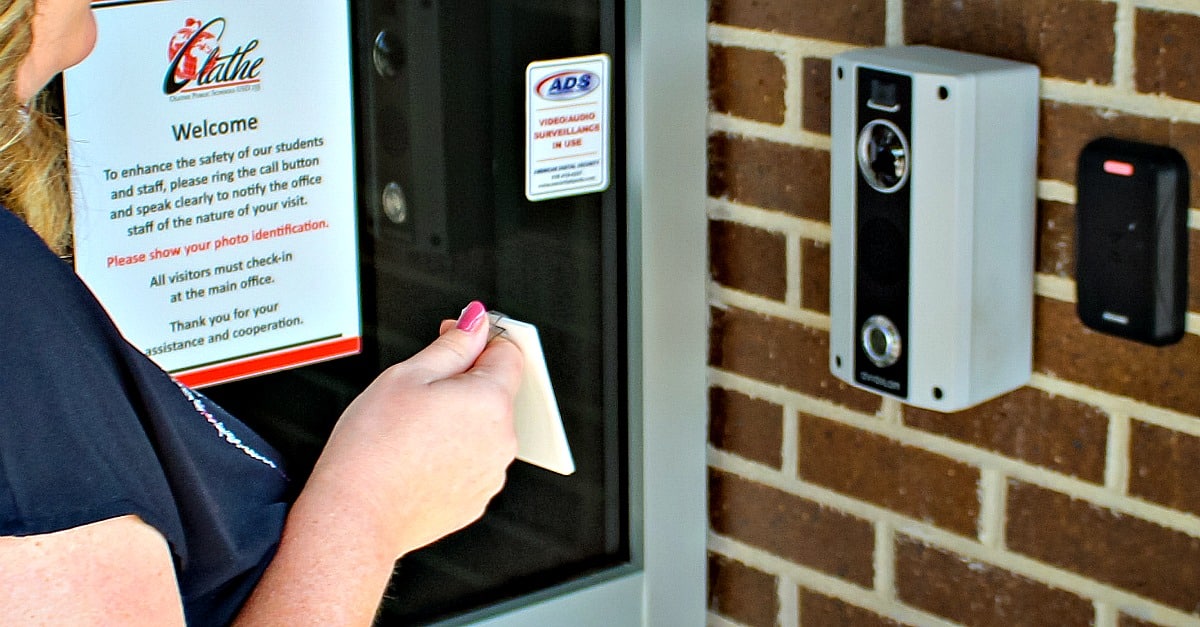
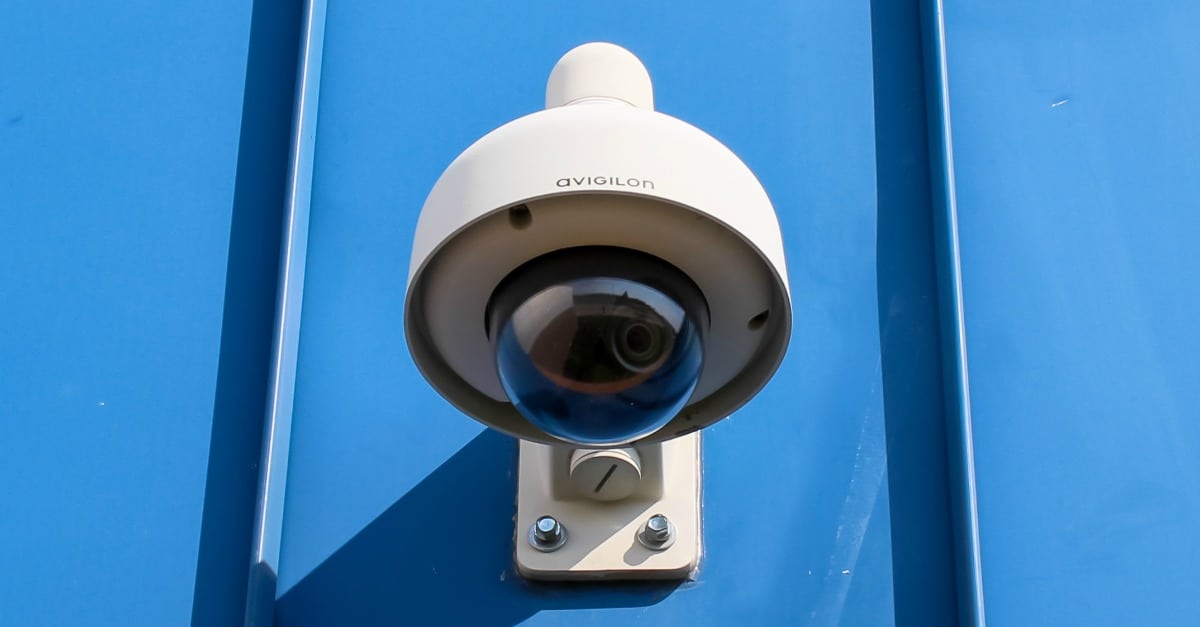
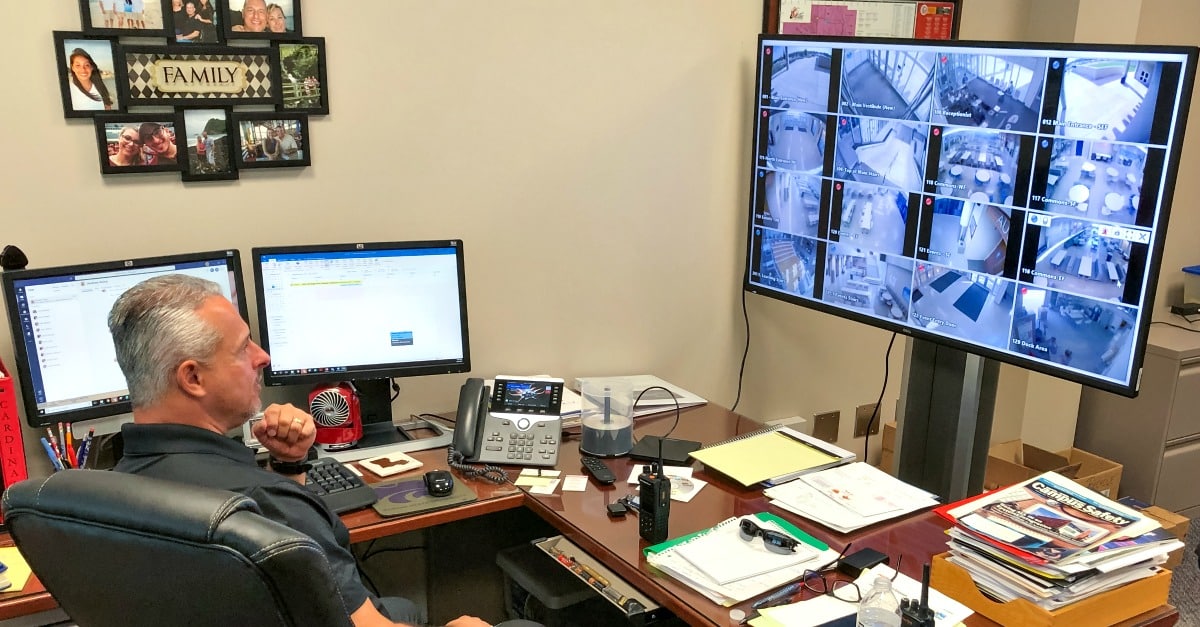
Lessons Learned
If there’s one thing Rick Castillo has learned from all of his experience, it’s that effective security is a shared responsibility. It’s not just the job of the people with the badges or the administrators. Everyone plays a role in creating a safe and secure school district.
“You don’t need a big budget to coordinate, communicate and problem solve. What you need is people willing to work closely together to understand successes and opportunities for improvement. When you build a culture of trust that encourages everyone to speak up when something goes wrong, it really does make a difference.”
In terms of technology, he recommends choosing smart technology for greater capability and maximum efficiency, and focusing it on your essential security functions. Castillo suggests sticking with technology vendors who make a priority of understanding your particular needs.
“I always want to know that they’re not just trying to sell me something. I need to be convinced that they want to solve my problems. And any technology I buy better perform as promised.”
Finally, just as school districts change over time along with all of the people behind them, technology changes too. So keep watching for what’s coming next.
“There’s always an opportunity to do better or do more. As security managers, our job is to carefully evaluate those opportunities as they come along, and it never ends.”
Want to learn more about securing your school or business?
Make an appointment to demo equipment! >>


